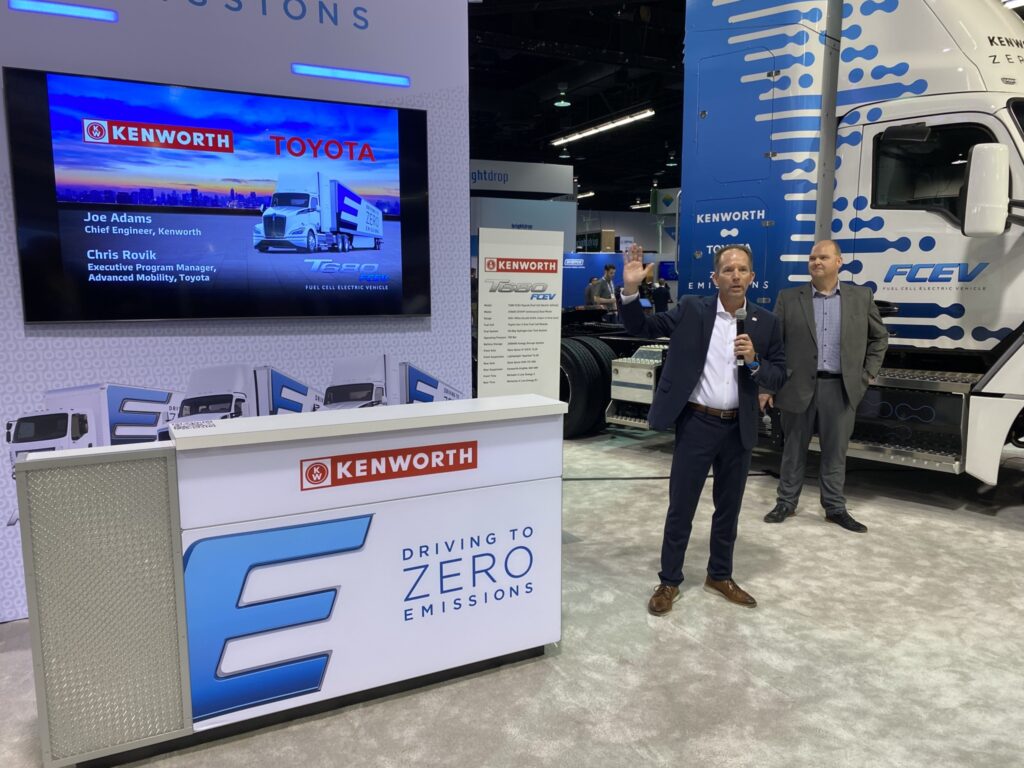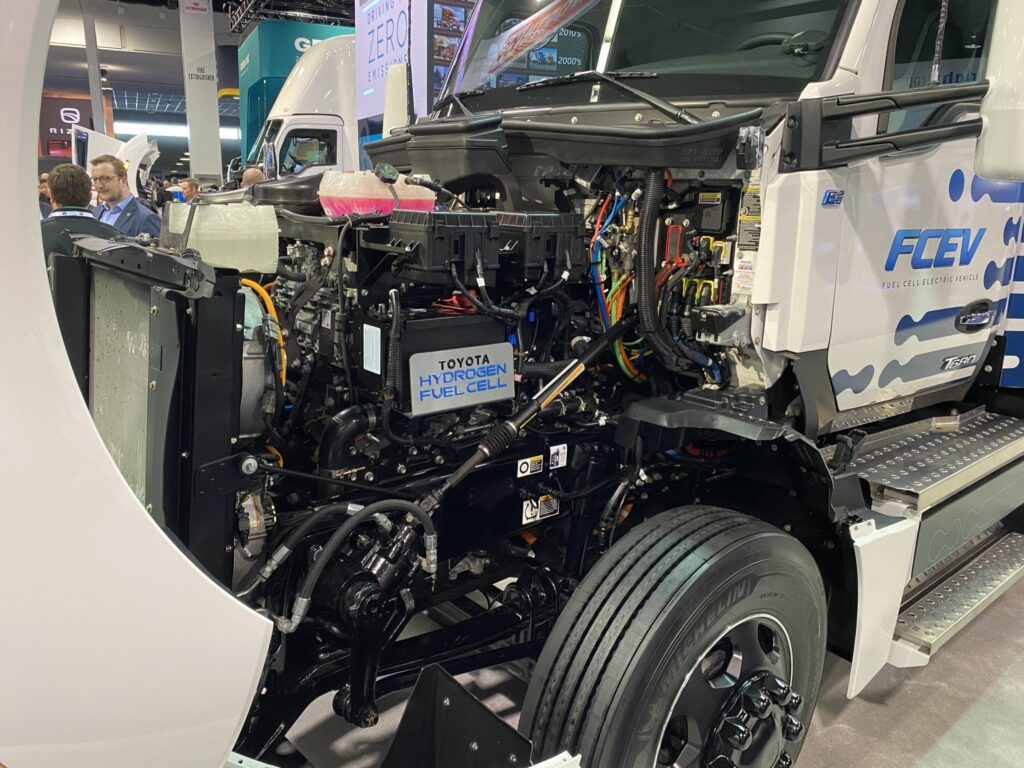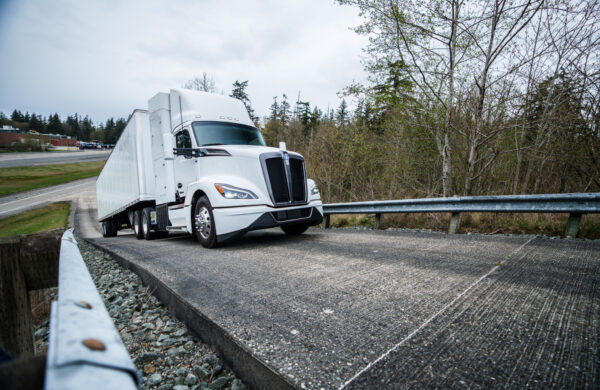Paccar will bring hydrogen-powered trucks to Canada and the U.S. as early as next year, producing Kenworth and Peterbilt Class 8 units that draw on Toyota’s Gen 2 hydrogen fuel cell module.
Series production is set to begin in 2025.
“Today a new partnership is born that will set the stage for the next 100 years,” said John Rich, Paccar vice-president and chief technology officer, during a keynote presentation at ACT Expo.
“Hydrogen presents the best zero-emission technology solution for long-distance Class 8 trucks, where range, weight, weight capacity, and refueling downtime are critical,” he said. “This is not a pilot. This is not an experiment. It’s not a trial. We’ve done all that. This is a tool that is ready to go to work – purchased, deployed, and supported with all the durability and uptime expectations of the diesel engine.”

The trucks emerge after a joint pilot program between Toyota and Paccar, involving 10 prototype Kenworth T680 FCEVs at the Port of Los Angeles.
That Shore to Store project compared the fuel-cell-electric vehicles to a 2017 diesel engine baseline, with the trucks traveling 200 miles (322 km) per day. Based on that, each truck saved 74.66 metric tons of CO2 per year.
It was part of a broader Zero and Near Zero Emissions Freight Facilities initiative. And Shell built three hydrogen filling stations to support the work.
Range and capability
“When we look at what our customers are telling us about range and capability, they’re looking for products that operate a lot like diesel powertrain trucks do today. And with the fuel-cell-powered trucks, we’re able to take that range up substantially,” said Kenworth chief engineer Joe Adams.
The Kenworth T680 fuel-cell-electric vehicle (FCEV) – on display during the event — has a range of up to 450 miles (725 km) depending on conditions, well beyond the limits of battery-electric alternatives. It comes with Toyota’s 310-kW dual motor assembly that can provide 415 continuous horsepower to support gross combination weight ratings of 82,000 lb.
It can be refilled in around 20 minutes, and California will soon have about a dozen high-pressure fueling stations, Paccar officials note.

Six iterations, two generations
“Under the hood, what we have packaged in here is our second-generation commercialized fuel cell module,” said Chris Rovik, Toyota’s executive program manager – advanced mobility, during a press briefing. “This is actually the sixth iteration of truck that we’ve built with a Toyota fuel cell powertrain in collaboration with Kenworth.” And it’s the third generation of truck with the second-generation fuel cell stack.
“We’ve really worked on improving the packaging efficiency to allow this powerplant to be kind of dropped in online in the production line as it exists today – not needing to do any sort of cell build or anything like that.”
The fuel cell kit includes the powertrain under the hood, the stacks, the hydrogen storage cabinet behind the cab, a high-voltage battery for additional power and regenerative braking when necessary, and the eDrive and transmission under the hydrogen cabinet.
“We’ve proven this hydrogen-powered fuel cell electric technology in real-world conditions and are excited to support commercial customers’ efforts to operate more sustainability,” said Matt Stich, general manager – fuel cell solutions at Toyota Motor North America.



Leave a Reply